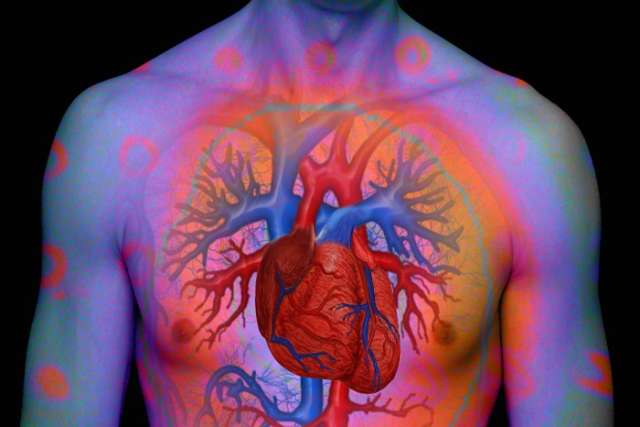A UCLA-led team has identified an essential internal control mechanism that can promote the maturation of human stem cell-derived heart muscle cells, offering a deeper understanding of how heart muscle cells develop from their immature fetal stage to their mature adult form.
The findings, published in the peer-reviewed journal Circulation, could lead to new therapies for heart disease and cardiac damage.
The collaborative effort with Duke-NUS Medical School in Singapore and other institutions identified an RNA splicing regulator named RBFox1, which was considerably more prevalent in adult heart cells than in newborns, based on a preclinical model. The sharp rise in RBFox1 during the maturation of heart cells was also confirmed through analyses of existing single-cell data.
“This is the first piece of evidence suggesting that RNA splicing control plays a vital role in postnatal heart cell maturation,” said study lead Jijun Huang, who conducted this research during his postdoctoral training in anesthesiology at UCLA. “While RBFox1 alone may not be sufficient to push mature fetal heart muscle cells all the way to fully matured adult cells, our findings uncover a new RNA-based internal network that can substantially drive this maturation process beyond other available approaches.”
The transformation of heart muscle cells from birth until they reach full maturity involves significant shifts in their structure, functionality, and physiological properties. The mechanisms overseeing this comprehensive maturation have been poorly understood thus far.
Although the precise mechanics associating RBFox1-mediated RNA splicing with ensuing maturation procedures and characteristics still require further exploration, the study provides proof-of-concept that modulating RNA splicing can profoundly affect cardiomyocyte maturation. This newfound knowledge hints at future therapeutic applications, pending additional research to expand upon these initial findings.
“For the first time, we've shown that by merely altering RNA splicing, we can encourage the significant maturation of heart cells derived from human stem cells,” said senior author Yibin Wang, director of the Cardiovascular & Metabolic Disorders Program at Duke-NUS. “These findings present a potential molecular approach to enhance heart cell maturation, which could address a major challenge in the domains of cardiac regenerative therapy and disease modeling.”
The study was funded by an American Heart Association Postdoctoral Award (18POST33990469) the National Institutes of Health (R01 HL148714, R00 HL141626) and a Department of Defense Award (PR171540).
Study co-authors are Josh Lee, Christoph Rau, Dr. Arash Pezhouman, Tomohiro Yokota, Hiromi Miwa, Tsz Kin Kong, Shreya Udani, Chen Gao, Linsey Stiles, Dr. Orian Shirihai, Dr. Reza Ardehali, and Dino Di Carlo of UCLA and others from Baylor College of Medicine, Vanderbilt University School of Medicine, Meharry Medical College, Forcyte Biotechnologies, the University of Cincinnati, the University of North Carolina, and the Agency for Science, Technology and Research (A*STAR) in Singapore.



